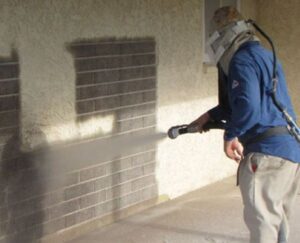The Ultimate Guide to Precision Surface Preparation

At Universal Media Blasting, we take pride in offering our clients comprehensive insights into the world of sandblasting. Sandblasting is a versatile and highly effective method used for precision surface preparation in various industries. In this guide, we will delve into the intricacies of sandblasting, its applications, equipment, safety measures, and best practices. Whether you’re a seasoned professional or a novice looking to understand sandblasting better, this article is your ultimate resource.
What is Sandblasting?
Sandblasting, also known as abrasive blasting, is a surface preparation technique that involves propelling abrasive materials at high velocities to clean, roughen, or shape a surface. The process is highly effective in removing rust, paint, scale, and contaminants from various surfaces, leaving them ready for coating, painting, or further processing.
Key Applications of SandblastingIndustrial Cleaning
Sandblasting is extensively used in industrial settings to clean machinery, equipment, and structural components. It efficiently removes years of grime, rust, and corrosion, restoring surfaces to their original condition.
- Automotive Refinishing
In the automotive industry, sandblasting is employed to prepare vehicle surfaces for painting or coating. It ensures optimal adhesion and a smooth finish, making it a crucial step in automotive refinishing. - Aerospace Manufacturing
Aerospace manufacturers rely on sandblasting to prepare aircraft components and surfaces for assembly. The precision and uniformity of sandblasting ensure the highest standards in aerospace manufacturing. - Construction and Restoration
In the construction sector, sandblasting is used for cleaning and restoring historical buildings, bridges, and monuments. It gently removes layers of dirt and contaminants without damaging the underlying structures.
The Sandblasting Process
- Abrasives Selection
Choosing the right abrasive material is crucial for successful sandblasting. Common abrasives include silica sand, aluminum oxide, garnet, and steel grit, each suited for specific applications. - Equipment Overview
Sandblasting equipment consists of a compressor, abrasive container, nozzle, and protective gear. The abrasive material is pressurized and propelled through the nozzle onto the target surface. - Surface Preparation
Proper surface preparation involves cleaning the surface, removing loose materials, and ensuring it is dry. This step is essential for achieving the desired results. - Safety Measures
Safety is paramount in sandblasting. Operators must wear protective gear, including helmets, goggles, gloves, and respirators, to shield themselves from abrasive particles and dust. - Blasting Techniques
Skilled operators use various techniques such as pressure adjustment, nozzle distance, and angle to control the intensity and pattern of abrasive flow for precise results.
Benefits of Sandblasting
- Efficiency: Sandblasting is a fast and efficient method of surface preparation.
- Versatility: It can be used on a wide range of materials, including metal, concrete, wood, and glass.
- Environmental Friendliness: Some abrasive materials can be recycled, making sandblasting an eco-friendly option.
- Quality Finish: Sandblasting leaves surfaces clean, smooth, and ready for finishing, ensuring a high-quality end product.
Sandblasting is a versatile and indispensable technique for precision surface preparation across various industries. Understanding the process, equipment, and safety measures is essential for achieving optimal results.
Back to Home Page